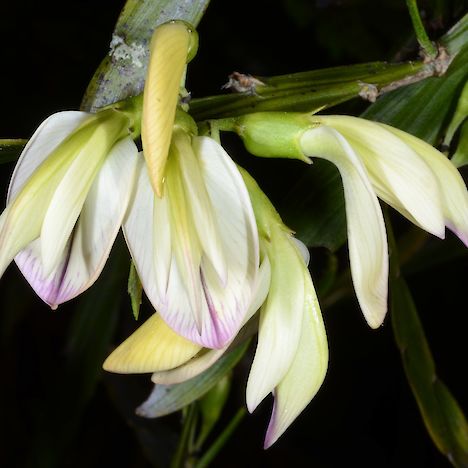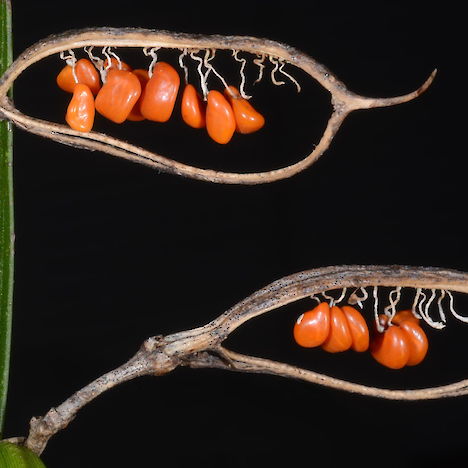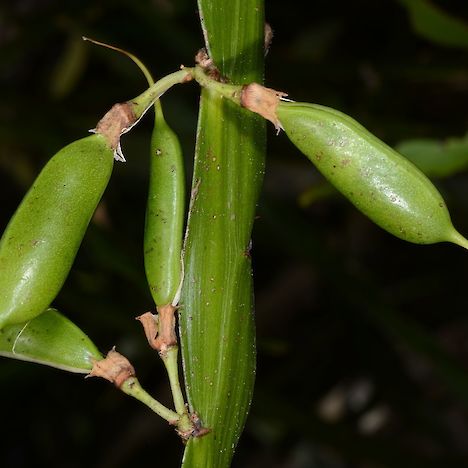Threat category:
At Risk: Relict?Regions:
Northland, Auckland, GisborneDistribution:
Northern and eastern North Island
Key Features
Native brooms in the genus Carmichaelia have a variety of growth habits, from small trees to low-growing shrubs, and even one climbing species. They have characteristic ‘pea flowers’ which can be very showy in some species. Many grow in areas that have potential for afforestation, and most are susceptible to browsing by stock and feral animals. As a consequence, several species are threatened.
- A native broom to 4 m tall, much-branched with flattened, green, grooved branches about 1 cm wide.
- Leaves only occur on young plants or in shade.
- The pale yellow flowers are up to 3 cm long, marked with purple veins, and occur in clusters of up to six.
- Pods are 2-3 cm long and erect.
- No other native broom has yellowish flowers, but the introduced and aggressively weedy scotch broom (Cytisus scoparius) does.
- Carmichaelia williamsii can be distinguished from Scotch broom by the broad, flattened branches, leafless habit and larger, pale yellow, veined flowers.
Distribution and Habitat
- North-eastern North Island, from the northern offshore islands to East Cape, but only two sites are now known on the mainland.
- Typical habitat is open forest on steep coastal slopes.
Threats
- Flower and seed predation by rats.
- Browsing by sheep, cattle and goats.
- Habitat modification and loss.
- Loss of pollinating birds.
Management Opportunities
- Survey for new locations.
- Mark known sites.
- Protection of habitat.
- Reintroduce to appropriate sites. Giant flowered broom is easily propagated from seed or cuttings.
- Protect from browsing animals.
- Control rats by poisoning.
- Ensure that forest owners are aware of potential habitats and can recognise the species.
Monitoring Options
- Check existing populations annually.
- Report new locations to DOC, NZPCN.
Further Information and Support
- New Zealand Plant Conservation Network (NZPCN). http://www.nzpcn.org.nz
- Pest control - Department of Conservation, Regional Councils.
- References:
- Dopson et al. (1999). The conservation requirements of New Zealand’s nationally threatened vascular plants. Threatened Species Occasional Publication 13. Department of Conservation, Wellington.
- Poole & Adams (1994). Trees and shrubs of New Zealand. Maanaki Whenua Press, Lincoln.
- Wilson & Galloway (1993). Small-leaved shrubs of New Zealand. Manuka Press, Christchurch.
- Wilson & Given (1989). Threatened plants of New Zealand. DSIR Publishing, Wellington.
- Salmon (1986). A field guide to the native trees of New Zealand. Reed Methuen, Auckland.




